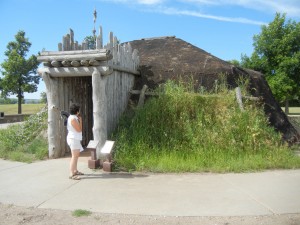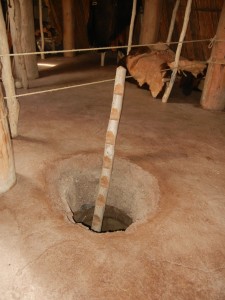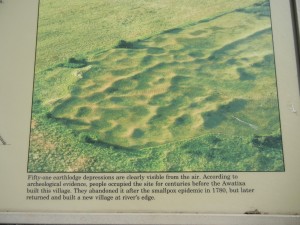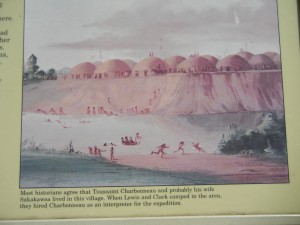South of Lake Sakakawea we visited the Knife River Indian Villages National Historic Site. The visitor center displays and video, the replica earthlodge, and the actual sites of the Hidatsa villages were all very interesting.

The Hidatsa lived close to the Mandan people along the Missouri River and its tributaries. Both tribes lived in established villages, where corn, beans, squash, and sunflower crops were important components of their diet along with fish and game. Dried corn, beans, and squash were stored for winter in cache pits dug into the ground.

The 30 to 40-foot diameter earthlodges built on terraces near the river were relatively permanent summer homes, lasting about 10 years. In winter they moved to forested areas for protection against winter winds and built cruder lodges, seldom used for more than one winter. The depressions left behind when the villages were abandoned over 100 years ago are still visible.

One village site we walked through near the visitor center is believed to be the home of Sakakawea, guide to the Lewis & Clark expedition.
